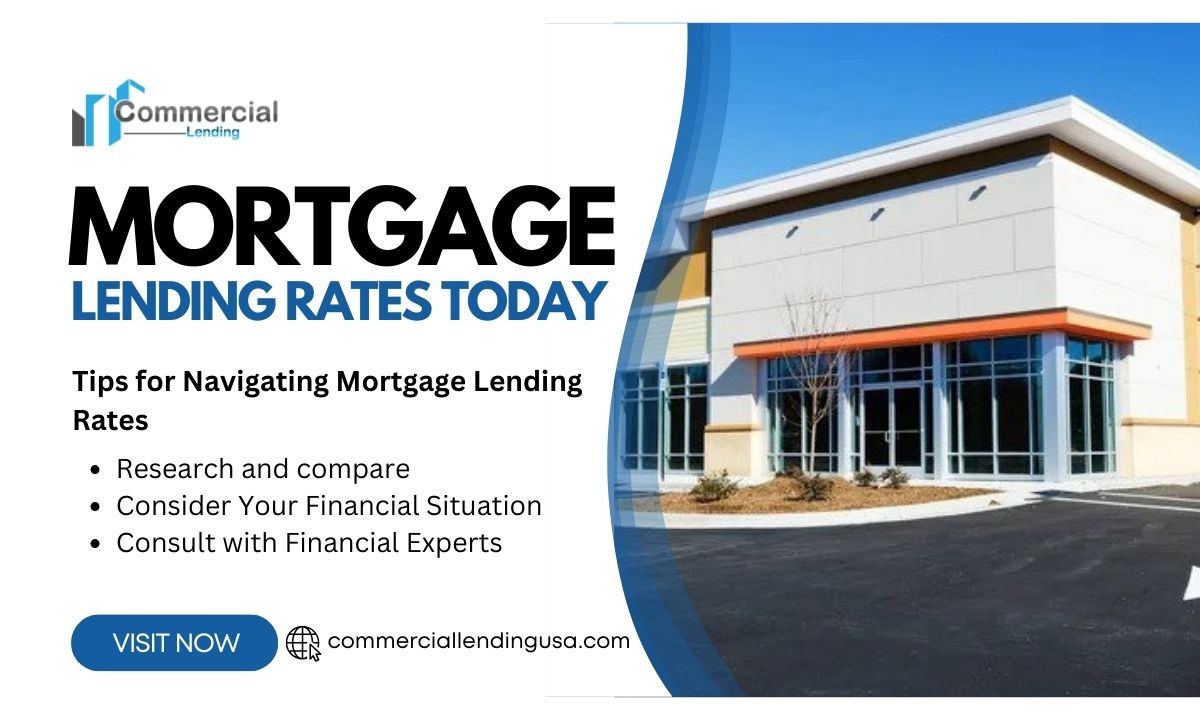
Exploring Bridge Loans and Mortgage Lending Rates Today
Introduction
In the ever-evolving landscape of real estate financing, the importance of finding the right financial solutions cannot be overstated. This blog post explores the intricacies of bridge loans on commercial and residential investment properties. Delves into the inclusivity of non-QM mortgage loans and sheds light on the current mortgage lending rates. By understanding these aspects, you can make informed decisions in today's dynamic market.
Understanding Bridge Loans
A bridge loan serves as a short-term financing option, providing the flexibility needed for seamless property transitions. Whether you're a residential or commercial investor, new home builder, project developer, or landlord, bridge loans offer a strategic financial instrument for those aiming for quick acquisitions or looking to transition seamlessly.
Key Features of Bridge Loans
Short-Term Nature: Typically lasting 1-3 years, bridge loans facilitate quick access to funds for real estate endeavors.
Quick Approval and Funding: Faster approval processes make bridge loans ideal for time-sensitive transactions.
Higher Interest Rates: While interest rates are higher, convenience and speed often outweigh the increased cost for specific needs.
Types of bridge loans
Commercial Property Bridge Loans
Designed to bridge the gap between acquiring a new commercial property and selling an existing one. These loans offer quick and flexible capital for investors and businesses capitalizing on time-sensitive opportunities.
Residential Investment Bridge Loans
Tailored for real estate investors, these short-term loans provide quick access to capital for acquiring and renovating residential properties. Enhancing the overall value of investment portfolios.
Non-QM Mortgage Loans
Non-QM mortgage loans cater to borrowers outside traditional criteria; moreover, they consider factors beyond credit scores and debt-to-income ratios. This inclusive approach accommodates unique financial situations and unconventional income sources.
Bridge Loans vs. Non-QM Loans
Bridge loans focus on temporary financing needs, while non-QM loans cater to borrowers outside of traditional mortgage criteria. Both involve higher risk; consequently, careful consideration based on individual circumstances is essential.
Mortgage Lending Rates Today
In order to get accurate, current information about mortgage lending rates as of November 2023, it is crucial to consult trustworthy sources. While I cannot provide real-time rates, it's crucial to understand that these rates may vary based on mortgage types, risk analysis, creditworthiness, property conditions, revenue, and locations. Typically, in today's market, interest rates for various loans range between 8% and 13%.
However, it's important to note that non-QM loans with a 30-year term may offer slightly more competitive rates. Though they might come with the caveat of a potential prepaid penalty.
Tips for Navigating Mortgage Lending Rates
Research and compare: Thoroughly explore different lenders and their offerings for the most favorable terms.
Consider Your Financial Situation: Assess your financial standing and future projections to guide your mortgage lending option.
Consult with Financial Experts: Seek advice from financial experts or mortgage brokers for valuable insights to navigate current market conditions.
Conclusion
Bridge loans and non-QM mortgage loans are prevalent in the complex world of real estate financing; therefore, understanding mortgage lending rates is a critical component. Whether you're exploring short-term solutions or inclusive lending options. Staying informed and seeking professional advice will empower you to bridge the gap. Between your real estate ambitions and financial success. It's crucial to collaborate with experienced professionals. Who can advise and find the best possible loans from their network or partners?
FAQ
Who can benefit from bridge loans?
Bridge loans are beneficial for residential or commercial investors, new home builders, project developers, and landlords, particularly those who are looking for quick access to capital for property acquisitions or transitions.
What are the key features of bridge loans?
The key features include their short-term nature (1-3 years), quick approval and funding processes, and higher interest rates compared to traditional loans, offering convenience and speed for time-sensitive transactions.
What are non-QM mortgage loans, and who are they designed for?
Non-QM mortgage loans cater to borrowers outside traditional criteria, considering factors beyond credit scores and debt-to-income ratios. Additionally, they are designed to accommodate unique financial situations and unconventional income sources.
What are the current mortgage lending rates, and how are they determined?
Mortgage lending rates vary based on mortgage types, risk analysis, creditworthiness, property conditions, revenue, and locations. Moreover, in today's market, interest rates for various loans typically range between 8% and 13%
How can I navigate mortgage lending rates effectively?
Effective navigation involves thorough research and comparison of different lenders. Furthermore, assessing your financial situation and future projections and seeking advice from financial experts or mortgage brokers are crucial to making informed decisions.
Sam Haq, CEO
Commercial Lending USA
www.commerciallendingusa.com
0 Comments
Leave A Comment